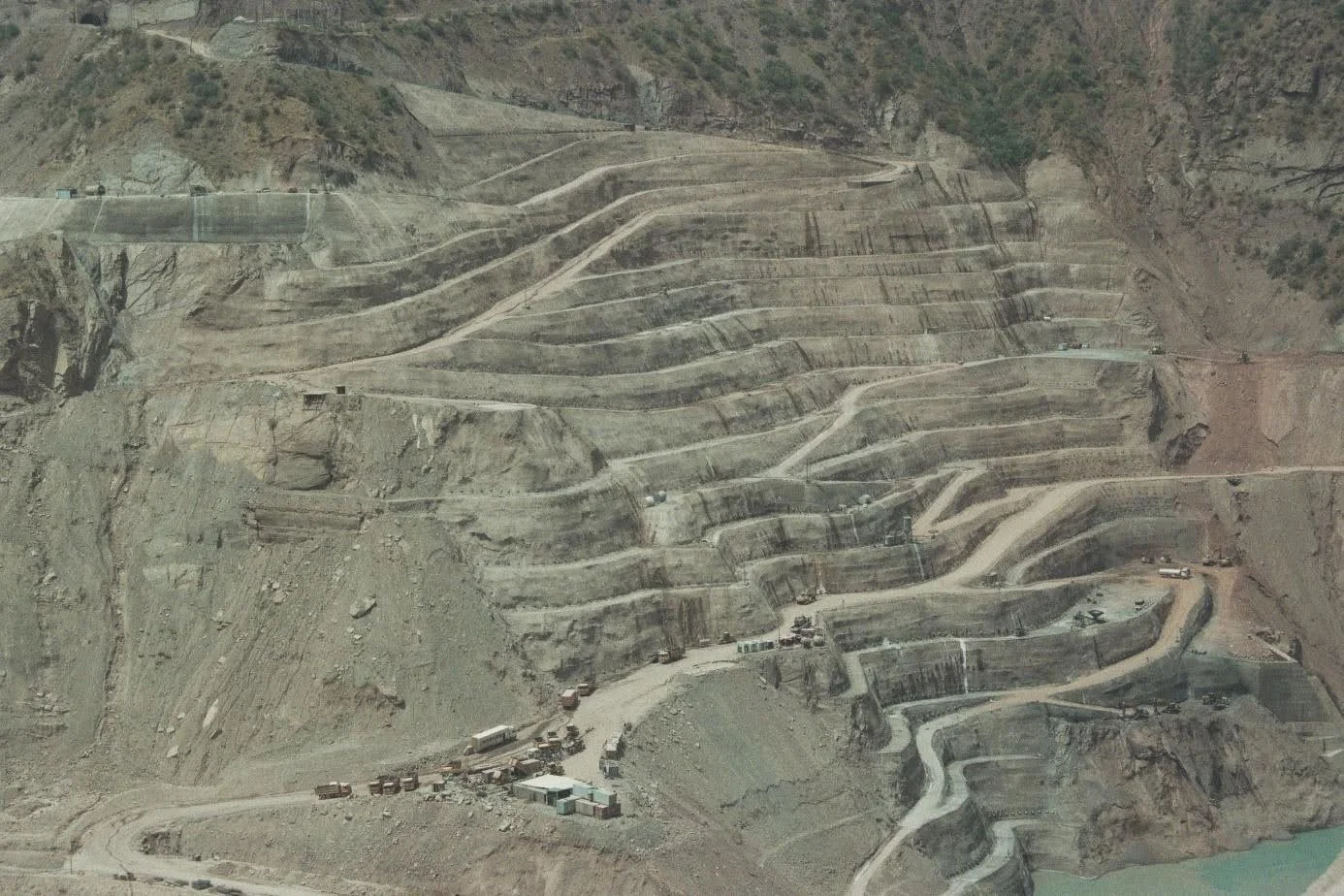The Vakhsh River Cascade and Tajikistan’s Hydropower Development: Challenges and Opportunities
By Andrea Stauder | 29 August 2025
This article is based on a field visit to Tajikistan, including inspections of the Nurek Dam and the Rogun Dam construction site. It incorporates insights gathered through direct discussions with project managers and the director of the Nurek Dam. The operational data and technical details presented here are based on information exchanged during these on-site meetings.
Summary
The Vakhsh Cascade in Tajikistan, Central Asia’s largest hydropower plants (HPP) complex, is undergoing extensive expansion and modernisation. Upon completion, its installed capacity will exceed 9,000 megawatts (MW), nearly doubling Tajikistan’s current hydropower capacity.
Despite historical opposition from Uzbekistan over water flow concerns, recent diplomatic progress and energy demand shifts have led to increased regional cooperation and commitments to purchase electricity from Rogun HPP. However, environmental and social concerns persist.
Tajikistan is highly likely to strengthen its role as a regional renewable energy leader by expanding hydropower while pursuing diversification into solar and wind energy. Continued investment and enhanced regional collaboration will be critical to sustainable development.
The Vakhsh Cascade, a series of HPP located on the Vakhsh River in Tajikistan’s Khatlon Region, represents the country’s largest hydropower complex. The Vakhshis a significant tributary of the Amu Darya (historically called the Oxus), the largest river in Central Asia. The project plans for nine power stations, with one currently under construction and another still in the design phase. Upon completion, the total installed capacity of the cascade will exceed 9,000 MW, producing approximately 36 billion kilowatt-hours (kWh) annually. The river’s estimated theoretical potential stands at around 45 billion kWh.
Among the hydroelectric plants in the Vakhsh cascade, the Nurek Dam is the most powerful in Central Asia and, at 304 metres, the second tallest dam worldwide after China’s Jinping-I Dam (though it remains the tallest earth-fill dam). Currently undergoing renovation, funded with nearly TJS 4.5b (USD 482.4m), its capacity will increase from 3,000 to 3,375 MW. These records will soon be surpassed by the Rogun Hydropower Project, a partnership between Italian firm Webuild and JSC Barqi Tojik, involving the construction of a 335-metre rockfill dam in the Pamir Mountains—the world’s tallest. Planned to be completed by 2028, the dam is projected to reach a capacity of 3,600 MW, which will double Tajikistan’s energy output and increase dramatically its energy export, especially to Afghanistan and Pakistan.
Although the World Bank (WB) asserts that the Rogun Hydropower Project will alleviate energy shortages and support decarbonisation across Central Asia, Uzbekistan has historically opposed the dam. This is due to concerns over reduced water flow from the Vakhsh River, a key tributary of the Amu Darya, which is essential for Uzbek agriculture. However, recent diplomatic efforts—including discussions on alternative hydro projects to enhance regional stability—have led Uzbekistan to suspend its opposition and commit to purchasing electricity from Rogun in 2022. This shift emerges from a culmination of Uzbekistan’s rising energy demand, a change in leadership fostering cooperation, and World Bank assurances on the dam’s safety and water management.
Despite the continued use of coal (accounting for 8.4% of the country’s energy mix in 2024), Tajikistan remains the greenest country in Central Asia and. Alongside Kyrgyzstan, Tajikistan relies most heavily on hydropower, which accounted for approximately 89% (or 98% according to Daler Juma, the Tajik Minister of Energy and Water Resources) of its electricity generation in 2024. Benefiting from abundant river resources, Tajikistan’s installed renewable energy capacity reached 5,738 MW by the end of 2024. However, diversification is urgently needed as the country’s energy sector is highly vulnerable to variations in river flow and weather patterns exacerbated by climate change, which threatens the reliability of Tajikistan’s hydropower. For instance, in 2024, water shortages forced Tajikistan to restrict electricity use as reduced rainfall constrained hydropower generation. To address this, Tajikistan is actively pursuing partnerships to develop solar power plants as part of its national strategy to diversify energy sources, including a landmark agreement with Saudi ACWA Power to construct a 200 MW solar plant in the Khatlon region and a Memorandum of Understanding signed between China’s Eging PV and Tajikistan’s Ministry of Economic Development and Trade to build a 200 MW solar plant in Tajikistan’s Panj Free Economic Zone.
Nonetheless, reliance on hydropower also presents significant environmental and social challenges. Notably, the Rogun Dam project is projected to cause a 25% reduction in the flow of the Amu Darya River, threatening millions downstream in Turkmenistan and Uzbekistan. The Environmental and Social Impact Assessment (ESIA) of the World Bank has been criticised as outdated, insufficient, and ignoring the needs of affected communities and neighbouring countries. To ensure sustainable development, Tajikistan should diversify its renewable energy mix by expanding solar and wind capacity, attract investment in new and existing infrastructure, and strengthen regional cooperation. Given its resources and strategic position, Tajikistan is positioned to consolidate its leadership in regional renewable energy, but remains burdened by financial and environmental concerns.
Forecast
Long-term (>1 year)
The Nurek Hydropower rehabilitation and modernisation project is on track for completion by 31 December 2026. Refurbishment of Units A and B was finalised in 2022 and 2024 respectively, with ongoing works progressing well into early 2025.
Upon completion of the Rogun Dam in 2028, Tajikistan is highly likely to emerge as a key regional hub for renewable energy, significantly increasing electricity exports to neighbouring countries, particularly Afghanistan and Pakistan.
Tajikistan is highly likely to persist in its efforts to diversify its energy mix, attracting investment not only in hydropower projects but notably in the development of solar and wind energy capacities, for example from China and Saudi Arabia.




